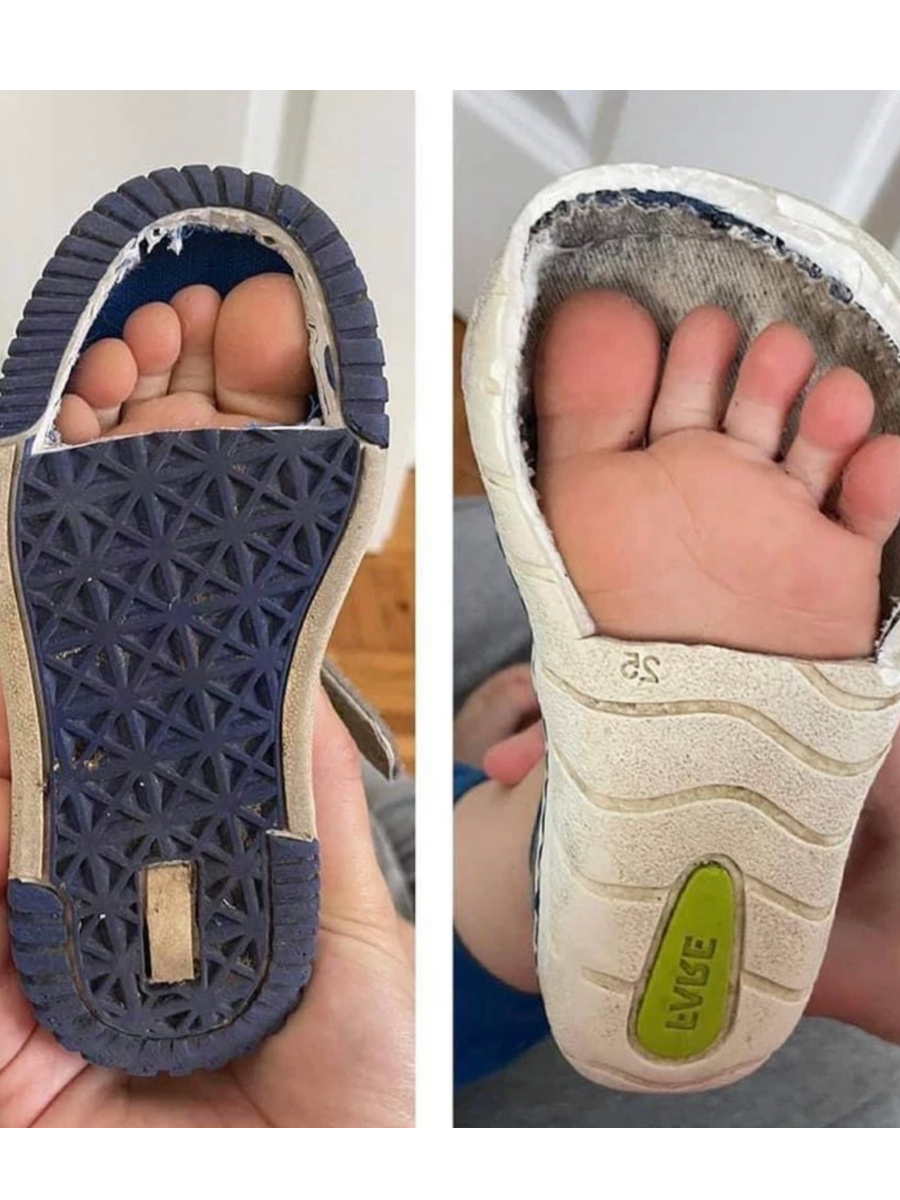7 Things to Look For in a Toddler Shoe
For more resources like this, check out these other Movement Mama posts:
How to Measure A Toddler for Shoes
Shoes for Chunky Toddler Feet: A Pediatric Physical Therapist’s Guide
Winter Shoes for New Walkers
Shoes for New Walkers: A Pediatric Physical Therapist's Guide
Alright because I know you're going to ask, these shoes are from Ten Little. And just so we're totally clear: for the purpose of this post specifically, we're speaking about a toddler who requires a shoe to walk outdoors or indoors such as stores, daycare, etc. This toddler also has no musculoskeletal abnormalities or abnormal foot position. We are just talking about general population kiddos with no developmental delays, ok? Okay.
Now that we've got that out of the way, here's the breakdown of what I want you to look for when going to a shoe store or clicking on some targeted baby shoe ad on Facebook:
Pull loop: Let's start simple. Just trust me when I say this will make your life 10,000x easier getting those chubby little feet into their shoes.
Firm but flexible heel cup: The position of the bone in your toddler’s heel can drastically affect their walking pattern and overall musculoskeletal alignment. We want it to sit upright but we also want it to be able to shift and move with changing surfaces. So when you pinch the heel of the shoe, it should have some give but also give some push-back, as well!
A protective, but flexible sole: The more minimalist sole is incredible for allowing your toddler’s foot to grow and develop as it should. Your little one’s foot will respond to the surfaces it encounters and form arches and strengthen muscles and ligaments in response. Not to mention, with a more flexible and minimalist sole, your child is more in control of their balance, readily able to feel the ground changing beneath them. However, we want to ensure their foot is protected. This is why I don’t recommend moccasin-type shoes once your little one is walking outdoors, because they’re not protective against heat/cold or rocks/glass, etc!
Removable insoles: I love this feature because it allows for more room for chunky toddler feet or for orthotics! It also allows you a tiny bit of extra wiggle room if you’re between sizes and not ready to purchase the next pair yet. To be clear: you don’t HAVE to remove the insoles, but should you find the shoes are a bit of a squeeze width-wide, this can help! Be sure to check out this blog post for even more ways to help fit a chunky foot in a shoe :)
Wide, foot-shaped toe box: Here's an amazing visual from My Foot Function that demonstrates WHY a wide toe box is so crucial to supporting tiny growing feet. Sure you may be able to slide your toddler's feet perfectly into a shoe in sitting, but when they stand, their foot and toes splay out. It's no wonder so many kids complain about shoe-wearing at first. They're used to letting their piggies free.
Minimal to no toe rise: Learning to walk is hard. Falling isn't fun, but it's a necessary part of learning. I love finding a shoe that has just a very light rise in the toe. Excessive toe rise isn't necessary (and can actually alter foot development), but giving our new walkers a bit of an advantage against tripping over their toes is helpful and encourages them to continue trying to walk throughout more of their day.
Velcro straps: Baby feet come in all shapes and sizes. And as toddlers grow, they lose the fatty tissue on their feet at times when their foot length may not actually change. Velcro straps not only allow for easy adjustability for their comfort but they also encourage independence at a younger age when they're able to get shoes on/off themselves. You may not want to teach this if you don't want every car ride to end in them kicking their shoes off, or you may just learn to not put shoes on until you reach your destination :) I'll let you decide.


